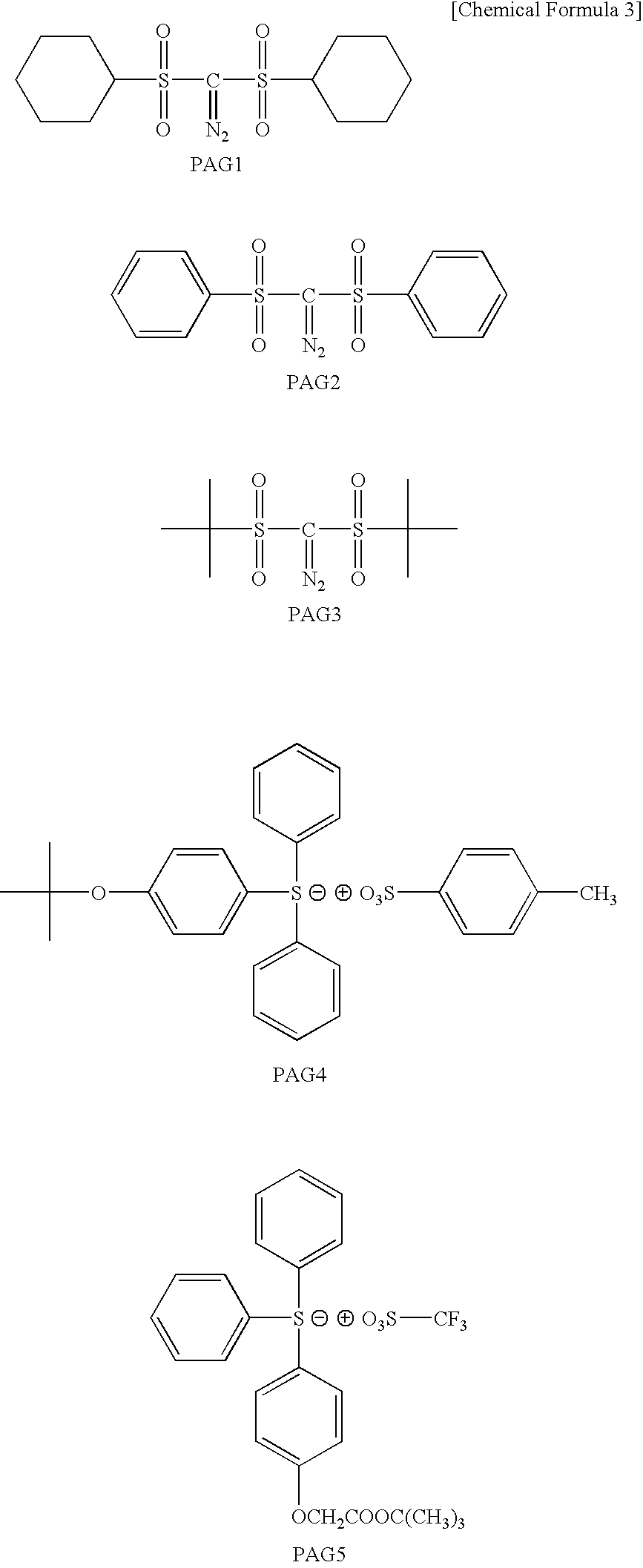Chemical amplification type photoresist composition, method for producing a semiconductor device using the composition, and semiconductor substrate
a technology of photoresist and composition, which is applied in the direction of photomechanical equipment, instruments, photosensitive material processing, etc., can solve the problems of resist pattern resolution defects in the inside of the via-hole or its vicinity, deactivation of acid catalyst in the photoresist and hence shortage, and severe
- Summary
- Abstract
- Description
- Claims
- Application Information
AI Technical Summary
Benefits of technology
Problems solved by technology
Method used
Image
Examples
Embodiment Construction
In the method for producing the semiconductor device, a resist film (1 of FIG. 1a) is formed on a substrate (semiconductor substrate) having a surface step difference (21 of FIG. 1a), using a chemical amplification type photoresist composition comprised of a base resin and a basic compound added to the base resin in a range of not less than 1 mmol to not more than 100 mmol to 100 g of the base resin, to form a resist film (1 of FIG. 1c), and a predetermined area of the resist film is exposed to light to form a resist pattern (1 of FIG. 1d). Even if the photoresist is poisoned by the poisoning component in the organic removing solution deposited to the vicinity of the step difference portion, it is possible to prevent the concentration of the acid catalyst from being lowered drastically, thanks to the buffering action of the basic compound in the resist. Thus, the light exposed portion of the resist can be converted into a substance soluble in the developing solution if the photoresi...
PUM
| Property | Measurement | Unit |
|---|---|---|
| dielectric constant | aaaaa | aaaaa |
| specific dielectric constant | aaaaa | aaaaa |
| dielectric constant | aaaaa | aaaaa |
Abstract
Description
Claims
Application Information
 Login to View More
Login to View More - R&D
- Intellectual Property
- Life Sciences
- Materials
- Tech Scout
- Unparalleled Data Quality
- Higher Quality Content
- 60% Fewer Hallucinations
Browse by: Latest US Patents, China's latest patents, Technical Efficacy Thesaurus, Application Domain, Technology Topic, Popular Technical Reports.
© 2025 PatSnap. All rights reserved.Legal|Privacy policy|Modern Slavery Act Transparency Statement|Sitemap|About US| Contact US: help@patsnap.com



